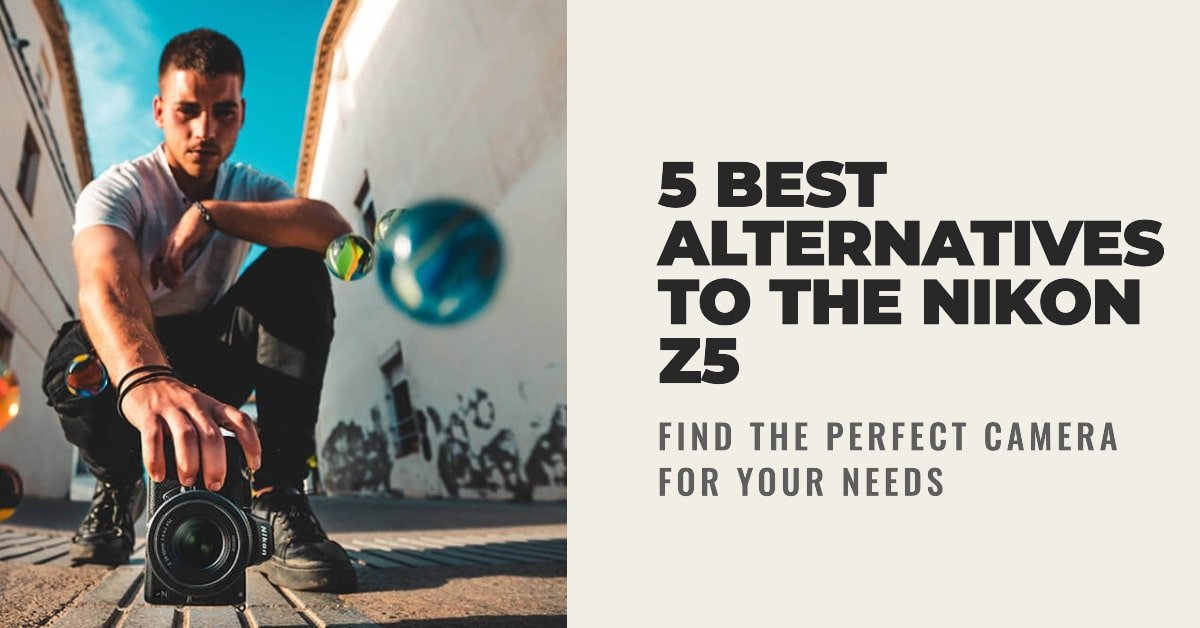If you’ve been eyeing the Nikon Z5 for your next camera upgrade, you’re not alone. This powerhouse of an FX-format mirrorless camera has been turning heads with its compelling feature set that caters to both photographers and videographers alike. With its 24.3MP CMOS sensor coupled with an EXPEED 6 processor, the Z5 not only offers high-quality imagery but also allows for quick shooting at 4.5 fps and UHD 4K video at 30 fps. Factor in its robust magnesium alloy body that’s weather-sealed for the adventurous spirit, a high-res OLED electronic viewfinder, and a versatile 3.2-inch tilting touchscreen, and you have a camera that seems almost too good to be true. But what if it’s not quite the right fit for you?
Whether you’re in search of different functionalities, looking for a more budget-friendly option, or simply curious about what else is out there, we’ve got you covered. In this article, we’ll be exploring the Top 5 Nikon Z5 Alternatives, so you can make an informed decision on the best camera to meet your creative needs.
1. Sony A6400

When it comes to mirrorless cameras, the Nikon Z5 and the Sony A6400 stand out as formidable contenders in the market. Both offer exceptional imaging capabilities but are designed to serve different needs and budgets. If you’re looking for a well-balanced camera that doesn’t break the bank, the Sony A6400 serves as a compelling alternative to the Nikon Z5. Let’s dive into the specifics to understand why.
1. Sensor- Full frame or APSC
The Nikon Z5 comes with a full-frame sensor, providing excellent low-light capabilities and a shallower depth of field. On the other hand, the Sony A6400 features an APS-C sensor, which though smaller, provides a competitive 24.2 MP resolution against Z5’s 24.3 MP. The A6400’s sensor performs exceedingly well for most photography and videography needs and is cheaper.
2. Autofocus
Nikon Z5 has 273 phase-detection points, while the Sony A6400 outshines with a remarkable 425 phase-detection points, adding contrast-detection into the mix. The A6400 boasts a super-fast autofocus system, which allows it to lock onto subjects in as little as 0.02 seconds.
3. Speed
The A6400 dominates in speed with an impressive 11 fps (frames per second) continuous shooting capability, as opposed to the Z5’s 4.5 fps. This makes the Sony model ideal for capturing fast-moving subjects and high-speed action shots.
4. Design- Dimension and Weight Comparison
While the Z5 weighs around 590g, the A6400 is notably lighter at 403g. Also, the A6400 is smaller in dimensions, making it more portable and convenient for travel or street photography. Both cameras come with a magnesium alloy construction, providing durability.
5. Viewfinder and LCD monitor
The Nikon Z5 comes with a superior OLED viewfinder with 3,690,000 dots, offering crisp and detailed previews. The Sony A6400, however, has 2,359,296 dots in its viewfinder but offers a 180° tilting touchscreen LCD, handy for vlogging or capturing creative angles.
6. Battery life
The Nikon Z5’s battery is rated for approximately 470 shots, while the Sony A6400 falls short with an estimated 360 shots. However, the A6400 supports USB charging, offering flexibility when you’re on the go.
7. Video Capabilities
Both cameras support UHD 4K video, but the A6400 comes with more robust video features. It offers multiple high frame-rate options and includes profiles like S-Log2 and S-Log3, providing more versatility in post-production. Also, it has no recording limit time, unlike Z5’s 30-minute cap.
8. Lens Mount and Availability
The Nikon Z5 uses the Z-mount with a growing selection of lenses. The Sony A6400 uses the well-established E-mount, which offers a broader range of native lenses. Given Sony’s history in mirrorless technology, you’ll find a wealth of lens options available.
9. Price
Price often serves as the deal-breaker for many. The Sony A6400 is priced at $900, making it substantially cheaper than the Nikon Z5, which comes in at $1,300. Considering the features and performance, the A6400 offers excellent value for money.
While the Nikon Z5 excels in certain areas like sensor size and battery life, the Sony A6400 emerges as a robust, cost-effective alternative. With its faster autofocus, higher shooting speed, and lower price point, the Sony A6400 is an attractive option for those who seek high-quality performance without the full-frame price tag.
2. Canon EOS R10
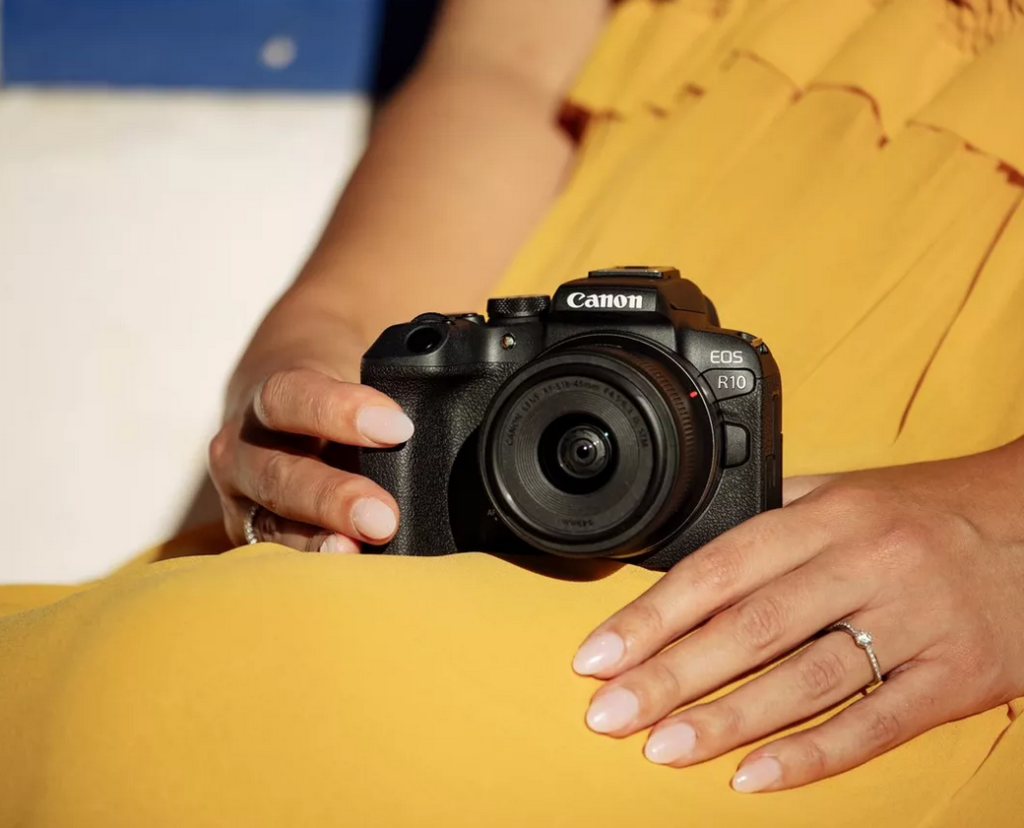
When it comes to choosing a camera that offers robust features without breaking the bank, many photographers find themselves caught between the Nikon Z5 and the Canon EOS R10. Both models offer compelling specifications, making the decision quite challenging.
1. Sensor- Full frame or APSC
Nikon Z5 boasts a full-frame CMOS sensor with an effective 24.3-megapixel resolution. The Canon EOS R10, on the other hand, comes with an APS-C CMOS sensor, offering an effective 24.2-megapixel resolution. While Nikon Z5’s full-frame sensor may provide better low-light performance, the EOS R10’s APS-C sensor is no slouch, especially when it comes to detail and color reproduction.
2. Autofocus
The Nikon Z5 has 273 phase-detection autofocus points, whereas the Canon EOS R10 overshadows it with a whopping 651 phase-detection points. This difference translates into faster and more accurate focusing, making the Canon EOS R10 a strong contender in this area.
3. Speed
Nikon Z5 offers continuous shooting up to 4.5 fps, which may be sufficient for casual photography but not ideal for action shots. Canon EOS R10 is far superior in this aspect, offering up to 23 fps with its electronic shutter. For high-speed photography, the EOS R10 clearly wins.
4. Design- Dimension and Weight Comparison
The Canon EOS R10 is more compact and lighter, weighing only 382.2 g, compared to the Nikon Z5 which weighs 590 g. The smaller dimensions and reduced weight make the EOS R10 easier to carry and handle.
5. Viewfinder and LCD monitor
Both cameras feature OLED electronic viewfinders, but the Z5 has a slightly higher resolution of 3,690,000 dots compared to the EOS R10’s 2,360,000 dots. The LCD monitors are similar in size and resolution. However, the EOS R10 offers a free-angle tilting touchscreen, offering more flexibility in composing shots.
6. Battery life
The Nikon Z5 has an EN-EL15c battery that lasts for approximately 470 shots. The Canon EOS R10’s LP-E17 battery does not provide specific shot numbers, but it’s generally comparable to Nikon’s in real-world usage.
7. Video Capabilities
Canon EOS R10 steals the spotlight here with 4K video at up to 59.94 fps in 10-bit 4:2:2, making it suitable for more professional video requirements. Nikon Z5 maxes out at 4K 30fps with no 10-bit recording.
8. Lens Mount and Availability
Nikon Z5 utilizes the Nikon Z mount, and the Canon EOS R10 uses the Canon RF mount. Both systems have a growing selection of lenses, but Canon’s RF lens lineup is rapidly expanding, offering more future-proofing possibilities.
9. Price
Perhaps the most attractive point is the price. The Canon EOS R10 is priced at $1,000 while the Nikon Z5 is at $1,300. Considering the features, the EOS R10 provides excellent value for money.
Though both cameras are strong competitors, the Canon EOS R10 offers better speed, video capabilities, and autofocus, all at a lower price point. Hence, the Canon EOS R10 stands as a good alternative for the Nikon Z5 for photographers looking for a balance between performance and affordability.
3. FUJIFILM X-S10
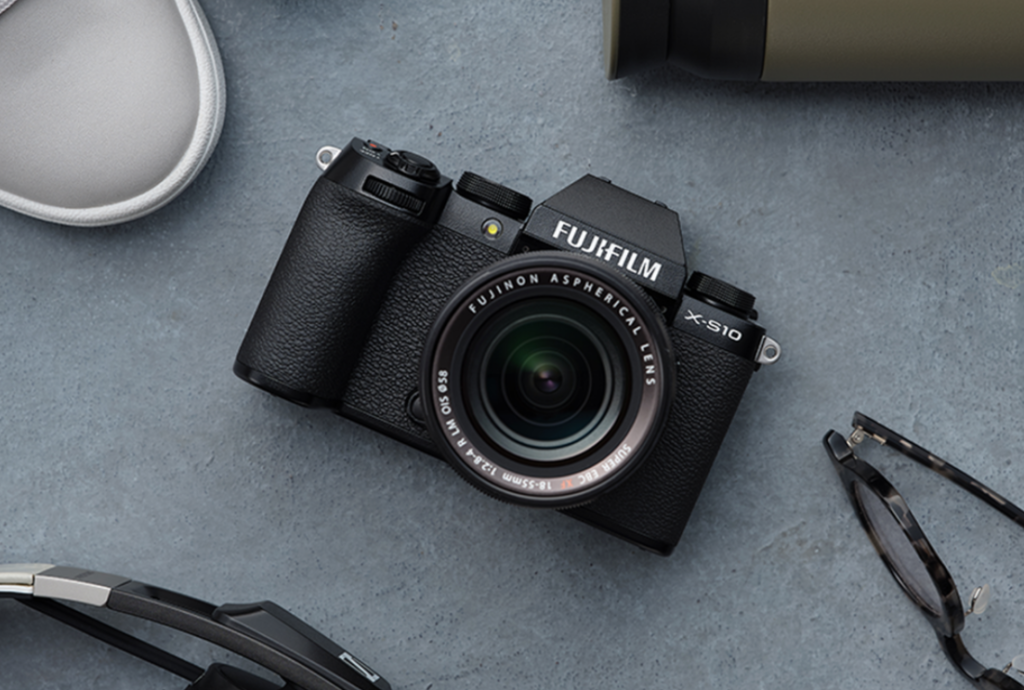
In the world of mirrorless cameras, options are plentiful. Among the models that often spark interest are the Nikon Z5 and the FUJIFILM X-S10. Though both cameras target different users with varying requirements, they offer excellent image quality and advanced features. For those eyeing the Nikon Z5 but are looking for a more budget-friendly alternative without sacrificing quality, the FUJIFILM X-S10 is a compelling contender. Below, we delve into various features to see how the X-S10 stands as a strong alternative to the Z5.
1. Sensor: Full-frame or APS-C
The Nikon Z5 features a full-frame CMOS sensor with an effective 24.3 Megapixel resolution, while the FUJIFILM X-S10 comes with an APS-C CMOS sensor offering a slightly higher resolution of 26.1 Megapixel. While full-frame sensors are known for better low-light performance and shallower depth of field, the APS-C sensor in the X-S10 is by no means a slouch, especially when it comes to detailed image capture.
2. Autofocus
Nikon Z5 uses a phase detection system with 273 autofocus points. The FUJIFILM X-S10, on the other hand, comes with a whopping 425 phase-detection points, providing more flexibility and precision in focusing. In this category, the X-S10 takes a slight edge in speed and accuracy.
3. Speed
The Nikon Z5 has a continuous shooting rate of 4.5 fps, which can be limiting for action or wildlife photography. In contrast, the FUJIFILM X-S10 excels with up to 8 fps with mechanical shutter and a staggering 20 fps with the electronic shutter, making it a better option for capturing fast-paced moments.
4. Design: Dimension and Weight Comparison
Nikon Z5 is bulkier and heavier, weighing 590g and measuring 134 x 100.5 x 69.5 mm. The FUJIFILM X-S10 is a more compact choice, weighing just 415g and measuring 126 x 85.1 x 65.4 mm. This makes the X-S10 easier to carry around for extended periods.
5. Viewfinder and LCD monitor
Both cameras offer OLED electronic viewfinders, but the Nikon Z5 has a slightly higher resolution of 3,690,000 dots compared to X-S10’s 2,360,000 dots. The Z5 has a 3.2-inch tilting touchscreen LCD, while the X-S10 comes with a slightly smaller 3.0-inch articulating touchscreen. The difference in viewfinder and LCD resolution may not be a deal-breaker for many users.
6. Battery life
The Nikon Z5 offers about 470 shots per charge, whereas the X-S10 provides around 325 shots. While Nikon wins in this department, the FUJIFILM’s battery life is still adequate for most day-to-day shooting scenarios.
7. Video Capabilities
Both cameras offer 4K video, but the X-S10 provides more flexibility with higher bit rates and frame rates, as well as 4:2:2 10-bit external recording via HDMI. If video recording is a priority, the X-S10 emerges as a more capable contender.
8. Lens Mount and Availability
Nikon uses its Z mount, and FUJIFILM employs its X-mount. Both mounts have a wide variety of lens options available, giving users flexibility in composing different types of shots.
9. Price
Price often becomes a deciding factor, and here the FUJIFILM X-S10 holds a distinct advantage. Priced at $1,000, it is $300 cheaper than the Nikon Z5, which costs $1,300. Given the features it offers, the X-S10 delivers excellent value for the price.
The FUJIFILM X-S10 offers a feature-rich package that competes robustly with the Nikon Z5, especially when considering its lower price point. Whether you prioritize autofocus capabilities, video features, or overall versatility, the X-S10 makes for a worthy alternative to the Z5.
4. Sony A6100
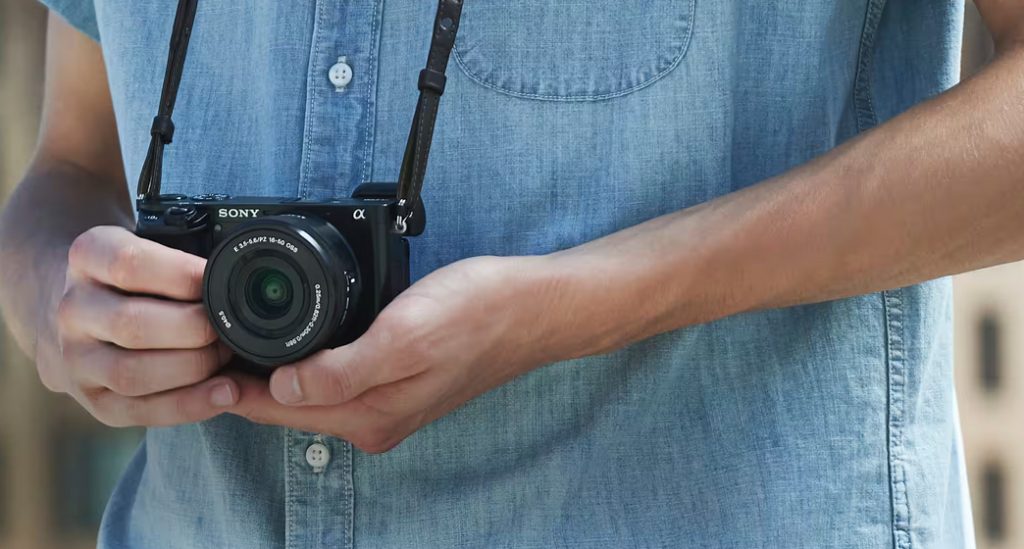
When it comes to capturing life’s moments, both professional photographers and hobbyists are constantly seeking the right camera that meets their needs and budget. The Nikon Z5 has been a standout choice for many, especially those who prefer full-frame sensors and robust controls. However, the Sony A6100 serves as an excellent alternative that challenges the Nikon Z5 in multiple areas. We’ll explore the advantages and features of the Sony A6100 that make it a viable contender against the Nikon Z5.
1. Sensor- Full Frame or APSC
The Nikon Z5 boasts a full-frame CMOS sensor, offering a 24.3MP resolution that can capture a greater dynamic range and low-light performance. On the other hand, the Sony A6100 is equipped with a 24.2MP APS-C CMOS sensor. While full-frame sensors are generally considered superior, APS-C sensors like the one in the A6100 also provide excellent image quality. Moreover, the A6100’s sensor has a crop factor of 1.5x, making it better for telephoto shooting by effectively multiplying the lens’s focal length.
2. Autofocus
Autofocus is a critical aspect of photography, and here the Sony A6100 shines with a stunning 425 phase-detection points. Compared to Nikon Z5’s 273 phase-detection points, the A6100 offers quicker and more accurate focusing, ensuring you never miss capturing the perfect moment. The A6100 even edges out the Nikon Z5 in terms of autofocus sensitivity, functioning effectively in a broader range of lighting conditions.
3. Speed
For those who require rapid capture rates, the A6100 is a worthy consideration. It can shoot at up to 11 frames per second (fps), which is significantly faster than the Z5’s 4.5 fps. This makes the Sony A6100 a better choice for capturing fast-moving subjects, like sports or wildlife photography.
4. Design- Dimension and Weight Comparison
The A6100 is notably lighter and more compact than the Nikon Z5, weighing in at just 396 grams compared to Z5’s 590 grams. The smaller dimensions make the Sony A6100 more convenient for travel and everyday photography. The lighter weight and smaller size make it easier to handle for prolonged periods, which could be a decisive factor for many users.
5. Viewfinder and LCD Monitor
Both cameras feature built-in OLED electronic viewfinders, but the Z5 comes out ahead in terms of resolution, offering a 3.69-million-dot display compared to the A6100’s 1.44-million-dot. However, the A6100 features a 180-degree tilting touchscreen LCD, providing more flexibility for creative angles and vlogging. The Z5’s LCD is a tilting touchscreen but lacks the 180-degree rotation.
6. Battery Life
When it comes to battery life, the Nikon Z5 has a slight edge with approximately 470 shots per charge, as opposed to the A6100’s 380 shots. While neither camera is a marathon runner in this aspect, the Z5 would require less frequent battery changes during extended shooting sessions.
7. Video Capabilities
Both cameras support 4K video recording, but the A6100 offers more frame rate options. Moreover, it has no recording time limit, unlike the Z5, which is capped at 30 minutes. The A6100 also supports fast and slow-motion video, providing creative flexibility for videographers.
8. Lens Mount and Availability
Nikon Z5 features the Nikon Z lens mount, while the A6100 uses the Sony E-mount. While both mounts have a wide variety of lens options, Sony’s E-mount lenses are generally more plentiful and often more affordable than their Nikon counterparts. This makes the A6100 a better choice for those looking to build a lens collection on a budget.
9. Price
Lastly, the cost factor can’t be ignored. Priced at approximately $800, the Sony A6100 is considerably cheaper than the Nikon Z5, which comes in around $1,300. This price difference can be a significant factor for those working within a budget, making the Sony A6100 an attractive alternative for cost-conscious consumers.
The Sony A6100 proves to be a compelling alternative to the Nikon Z5, offering advantages in autofocus, shooting speed, design, video capabilities, and price. While the Z5 excels in sensor quality and battery life, the A6100 provides a highly competitive package that should not be overlooked.
5. FUJIFILM X-T30 II
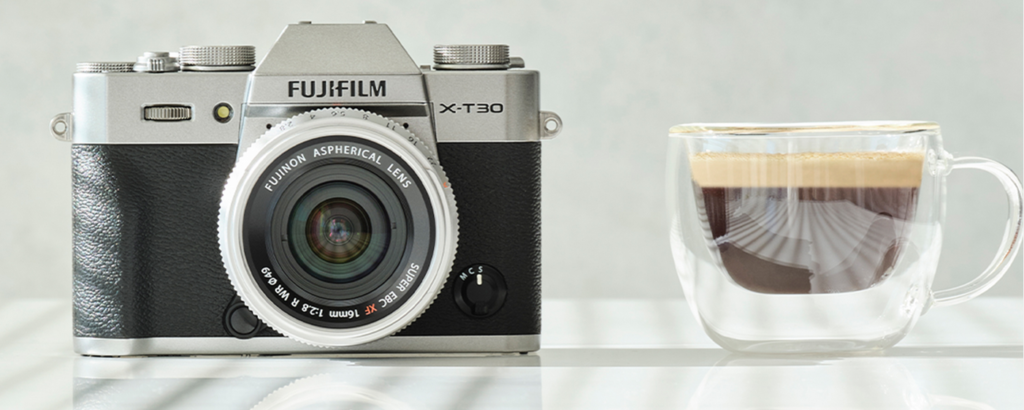
For photographers and videographers on the lookout for a reliable and feature-rich camera without breaking the bank, the quest often stops at well-established brands like Nikon and Fujifilm. While Nikon’s Z5 has been a favorite in the full-frame category, the FUJIFILM X-T30 II comes up as an enticing alternative, especially for those looking to save some money without compromising on quality and features. Here’s why the FUJIFILM X-T30 II serves as a good alternative for the Nikon Z5 across multiple parameters.
1. Sensor- Full frame or APSC
The Nikon Z5 offers a full-frame sensor with an effective 24.3-megapixel resolution. This makes it a preferable choice for professionals who demand a wider field of view and exceptional low-light performance. On the other hand, the FUJIFILM X-T30 II offers an APS-C sensor with a slightly higher 26.1-megapixel resolution. While an APS-C sensor might not offer the breadth of a full-frame, it does provide a compact and lightweight design along with a more affordable price. The X-T30 II doesn’t compromise much on image quality, making it a worthy alternative for those who are willing to trade sensor size for affordability and portability.
2. Autofocus
When it comes to autofocus, the Nikon Z5 features a 273-point phase-detection system. In comparison, the FUJIFILM X-T30 II outshines with a 425-point phase-detection autofocus system. This extensive focus coverage by the X-T30 II ensures quicker and more accurate focusing, particularly useful for capturing fast-moving subjects or shooting videos.
3. Speed
The Nikon Z5’s continuous shooting speed stands at 4.5 frames per second, which is decent for most general-purpose photography. The FUJIFILM X-T30 II, however, raises the bar significantly with an incredible speed of up to 30 fps with its electronic shutter. This superior speed makes it an excellent choice for action and wildlife photography, offering more flexibility in capturing the perfect moment.
4. Design- Dimension and Weight Comparison
Size and weight can be crucial factors for photographers who often travel or shoot for extended periods. The Nikon Z5, with dimensions of 134 x 100.5 x 69.5 mm and a weight of 590g, is a tad bulkier than the FUJIFILM X-T30 II, which measures 118.4 x 82.8 x 46.8 mm and weighs only 378g (with battery and recording media). The X-T30 II’s compact and lightweight design makes it much easier to carry around, especially for long-duration shoots.
5. Viewfinder and LCD monitor
Both cameras feature OLED viewfinders, but the Z5’s viewfinder boasts a higher resolution of 3,690,000 dots, compared to the X-T30 II’s 2,360,000 dots. However, the X-T30 II fights back with its higher resolution 1,620,000-dot tilting touchscreen LCD, while the Z5 settles for a 1,040,000-dot tilting touchscreen. The higher LCD resolution of the X-T30 II can make a difference in live view shooting and image playback.
6. Battery life
The Nikon Z5 offers approximately 470 shots per charge with its EN-EL15c rechargeable lithium-ion battery. FUJIFILM’s X-T30 II, however, falls slightly short in this department with fewer shots per charge. If battery life is a significant concern, the Z5 has a slight edge, but additional batteries for the X-T30 II are relatively inexpensive.
7. Video Capabilities
Both cameras offer 4K video capabilities, but the X-T30 II provides more comprehensive recording options and better bit-rate. Furthermore, the X-T30 II offers 4:2:2 10-bit external recording via HDMI, giving videographers more flexibility in post-production. Although the Nikon Z5 is no slouch in video performance, the FUJIFILM X-T30 II presents itself as a more feature-rich option for serious videographers.
8. Lens Mount and Availability
The Nikon Z5 uses a Nikon Z lens mount, which although excellent, offers fewer affordable lens options than FUJIFILM’s well-established X Mount. With an extensive range of lenses available, from wide-angle to telephoto, the X-T30 II gives users more flexibility to choose the right lens for their needs without breaking the bank.
9. Price
Finally, the FUJIFILM X-T30 II comes with a price tag of $1,000, which is $300 less than the Nikon Z5’s $1,300. This price difference could be used towards purchasing additional lenses or accessories, making the X-T30 II a more budget-friendly option without compromising on features and performance.
The FUJIFILM X-T30 II is not just an alternative but a robust contender to the Nikon Z5. From autofocus and speed to design and video capabilities, it offers a compelling package for photographers and videographers alike, all while being more budget-friendly.
- Also Read- Sony a9 II Not Turning On: Causes and How To Fix It
- Also Read- Davinci Resolve Mirror Effect (3 Methods)
- Also Read- Top 5 Nikon Z50 Alternatives

